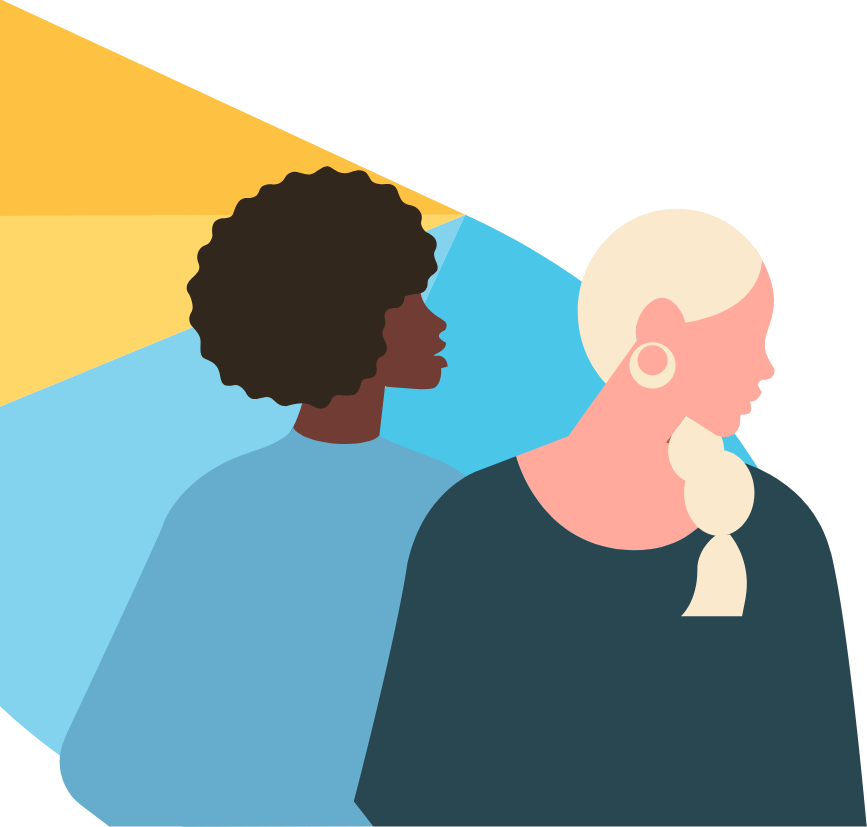Menu

Phobias, also known as specific phobias, is defined by the DSM-V as an intense, unreasonable fear of something specific, someone or something. Phobia symptoms can show up in cognitive, behavioral and physical ways, in children and adults. A phobic response goes beyond just being uncomfortable or dislike and for people with phobias these fears can cause severe anxiety that can impact their daily life, relationships and overall happiness.
A specific phobia is an intense, unreasonable fear of something specific, someone or something that lasts for at least 6 months. This type of anxiety disorder can cause significant distress and impairment in daily life, making it hard for people to function normally. Specific phobias are grouped into 5 main categories: natural environment, living things, situations, objects and recreational activities. For example, some common phobias are fear of spiders (arachnophobia), fear of flying (aviophobia) and fear of enclosed spaces (claustrophobia). Each of these phobias can cause severe anxiety and avoidance behaviours that can impact a person’s life.
Specific phobias can appear in childhood or adolescence but can also emerge at any age. Because of the avoidance behaviours, they can go undiagnosed or be mistaken for general anxiety.
The DSM-V lists the following criteria for diagnosing specific phobia:
For a specific phobia to be diagnosed the person must experience severe and consistent anxiety in response to the phobic stimulus that limits their daily life. Early diagnosis is key to treating phobias using various therapies such as psychotherapy and exposure therapy.
Phobias are categorised into subtypes based on the focus of the fear. The most common are animal phobias (such as spiders or dogs), natural environment phobias (such as heights or storms), situational phobias (such as flying or enclosed spaces), blood-injection-injury phobias and others like loud noises or clowns.
Specific phobias are more common than you think, affecting 7-9% of the population, with slight variations by age and gender. Among the types, animal phobias are the most common affecting 3-5% of people. Natural environment phobias are also common affecting 2-4%. Situational phobias affect 2-3% of the population and blood-injection-injury phobias 3-4%. Interestingly, specific phobias are more common in women than men, but blood-injection-injury phobias are roughly equal.
The symptoms of specific phobia can be different for each person and the feared object or situation. Here are some common symptoms:
Specific phobia is diagnosed according to the DSM-5 criteria which are:
The exact causes of specific phobia are not known but several factors are thought to contribute:
Specific phobia can impact a person’s life in many ways, shaping their decisions and routines that over time can become restrictive. For people with this disorder, the anxiety response to the feared object or situation can be very intense. The fear is often intense and automatic, over-rides logical thinking and triggers physical responses like racing heart, sweating or dizziness.
But it’s not just when faced with the feared object/situation that people are impacted. The anxiety response can be so intense that people will often consciously avoid certain environments which can limit their ability to live life, like not attending certain events, delaying medical appointments or avoiding travel. Even if you can avoid the phobia-triggering situations, the anticipation of potential encounters with the feared object/situation can create ongoing hypervigilance and stress.
Specific phobia requires a targeted, therapeutic approach to gradually reduce the fear response and increase tolerance to the phobic stimulus. Evidence based approaches to managing specific phobias include cognitive behavioural approaches which include exposure therapy, cognitive restructuring, Eye Movement Desensitisation and Reprocessing (EMDR) and anxiety management strategies.
Exposure therapy, a form of cognitive behaviour therapy (CBT), is one of the most effective treatments for specific phobia. Through exposure therapy, individuals confront the feared object or situation in a gradual and systematic way, learn to tolerate the anxiety and eventually reduce the fear response. Exposure can be done in different formats, in vivo (real life exposure), imaginal (imagining the feared scenario) or virtual reality depending on the phobia and resources available.
The process starts by creating a fear hierarchy – a list of scenarios related to the phobia in order of least to most anxiety provoking. For example, someone with a fear of heights might start with a ladder and work their way up to standing on a high balcony and then to a higher building. By starting small and gradually increasing exposure, the individual will feel more comfortable with what they fear but will also build confidence in their ability to manage that fear. Over time, repeated exposure helps to “retrain” the brain to respond with less anxiety. The goal then is to reduce avoidance behaviours.
Cognitive restructuring is a technique used alongside exposure therapy to address the irrational beliefs underlying specific phobias. This involves identifying, challenging and modifying the distorted thoughts that fuel the fear response. Cognitive restructuring is particularly helpful when an individual has deeply ingrained beliefs about their phobia. For example, someone with a dog or spider phobia who believes “All dogs/spiders are dangerous”. Therapists work with the individual to examine the evidence for these beliefs and develop more balanced, rational perspectives. For instance, someone with a flying phobia might learn that most flying is very safe and that the likelihood of harm is very small. This won’t stop the irrational fear response but will help the individual to develop more balanced thoughts about the feared stimulus.
Although EMDR is most well known for treating trauma, it can be effective for specific phobias when the phobia is rooted in a distressing memory or past experience. For example, someone with a water phobia might have had a near drowning experience that is unresolved. EMDR can help individuals process and reframe these traumatic memories and reduce their reaction to similar situations.
EMDR uses bilateral stimulation, often in the form of guided eye movements to facilitate the reprocessing of negative memories. During EMDR the individual recalls the distressing experience while simultaneously focusing on a moving object or other forms of bilateral stimulation. This can help “unfreeze” traumatic memories and reduce the emotional charge attached to them. Once reprocessed the memory will no longer trigger the anxiety in the same way.
For people with phobias rooted in trauma EMDR offers a way to address the root of the fear which can be used alongside exposure therapy and cognitive restructuring for a more holistic approach.
Virtual reality therapy is a form of exposure therapy that uses virtual reality technology to simulate the feared object or situation. This has been shown to be effective in reducing symptoms of specific phobia especially for individuals who find it hard to confront their feared object or situation in real life. By creating a controlled, immersive environment virtual reality therapy allows individuals to gradually face their fears in a safe and manageable way. This can be used alongside CBT and other therapies to enhance treatment outcomes and provide a more comprehensive approach to managing specific phobias.
Anxiety management techniques are key in the treatment of specific phobias, providing individuals with tools to manage their intense reactions to the feared object or situation. These techniques can help manage the cognitive, behavioural and physical phobia symptoms so individuals can cope with their fears. While the core of treatment often involves exposure to the phobic stimulus, anxiety management techniques are a vital part of this as they provide skills to manage anxiety responses so gradual exposure is less overwhelming. Here are some of the most effective anxiety management techniques used to treat specific phobias.
Deep breathing or diaphragmatic breathing is one of the simplest and most effective ways to calm the body’s stress response. When faced with a phobic trigger people often breathe rapidly and shallowly which can lead to physical symptoms (dizziness, shaking etc) and increased anxiety. Deep breathing counteracts this by slowing the breath and sending a message to the brain that there is no threat. For someone with a fear of heights practicing deep breathing before looking down from a tall building can slow their heart rate (to some degree) and reduce the immediate panic. Regular practice of deep breathing outside of anxiety provoking situations also builds confidence in one’s ability to self soothe and reduces the anticipation of fear.
Progressive Muscle Relaxation (PMR) involves tensing and then slowly releasing each muscle group in the body. This helps to reduce physical tension associated with anxiety. Through regular PMR practice individuals become more aware of their body’s physical responses to stress and can use the technique to prevent tension from escalating into a full blown panic reaction.
Mindfulness practices are another way to manage phobic anxiety as they encourage individuals to stay present in the moment rather than catastrophic future scenarios. Techniques like guided meditation, body scanning and simple grounding exercises (such as focusing on sensory details) can break the cycle of anticipatory anxiety. For example someone with a fear of flying may use grounding techniques to stay centred during turbulence and reduce anxious thoughts about what could go wrong.
Visualisation is another way to reduce anxiety related to specific phobias. Through visualisation individuals mentally “rehearse” exposure to their feared situation in a safe controlled environment. For example someone with a phobia of public speaking may visualise themselves speaking calmly to a small audience. Visualisation is effective because it allows the person to experience the phobic situation in their mind and pair it with relaxation rather than panic rather than catastrophising which does the opposite.
Finally self-compassion is an often overlooked but essential part of managing phobias. Phobias can bring feelings of shame or frustration and self criticism can heighten the stress response. Learning to approach the phobia with self compassion – to acknowledge the anxiety without judgment – can reduce internal pressure.
Specific phobia can have a significant impact on mental health and overall wellbeing if left untreated. People with specific phobia may experience:
Treatment for specific phobia usually involves cognitive behavioural therapy, exposure therapy and mindfulness based cognitive therapy. Medication such as antidepressants and anti anxiety medication may also be prescribed to help reduce anxiety and fear. If symptoms of specific phobia are interfering with daily life seek help from a mental health professional as treatment can make a big difference to mental health and wellbeing.


At Cova Psychology in Melbourne we offer evidence based treatments for phobias including cognitive behavioural therapy and exposure therapy. Our experienced Melbourne psychologists will develop a treatment plan tailored to you and help you gradually face and overcome the feared situation in a safe and supportive environment. If a phobia is impacting your life contact our Melbourne psychologists today to start your journey by:
We are available for both face to face and telehealth sessions.
Let’s discuss your needs and match you with the right Melbourne psychologist.



Don't let your struggles hold you back. Call us.
Let’s discuss your needs and match you with the right Melbourne psychologist.
Let’s discuss your needs and match you with the right Melbourne psychologist



Acknowledgement of Country
Cova Psychology acknowledges the Traditional Owners of the land where our Melbourne CBD practice is located—the Wurundjeri Woi-wurrung and Bunurong/Boon Wurrung peoples of the Kulin Nation. We pay respect to their Elders, past and present, as well as the Elders of other Aboriginal communities in Melbourne and beyond.






We would like to acknowledge the Traditional Owners of the land on which the practice is located. We pay our respects to their Elders, past and present, and the Aboriginal Elders of other communities who may be here today.























